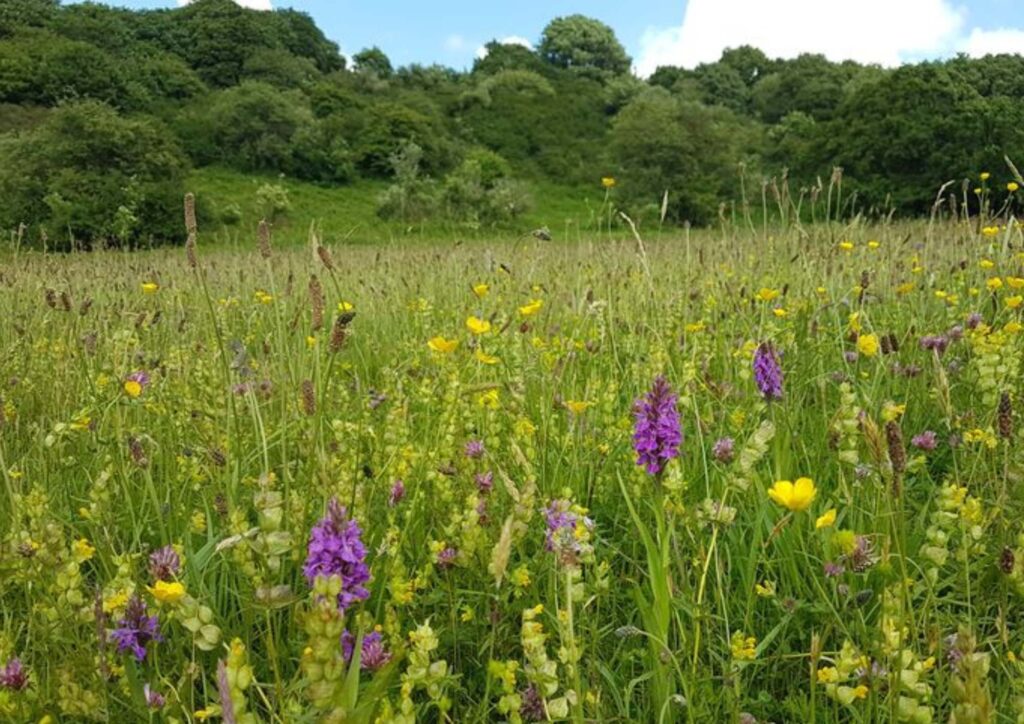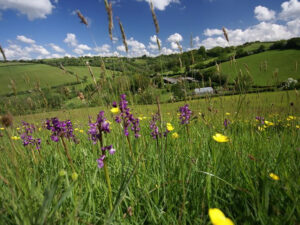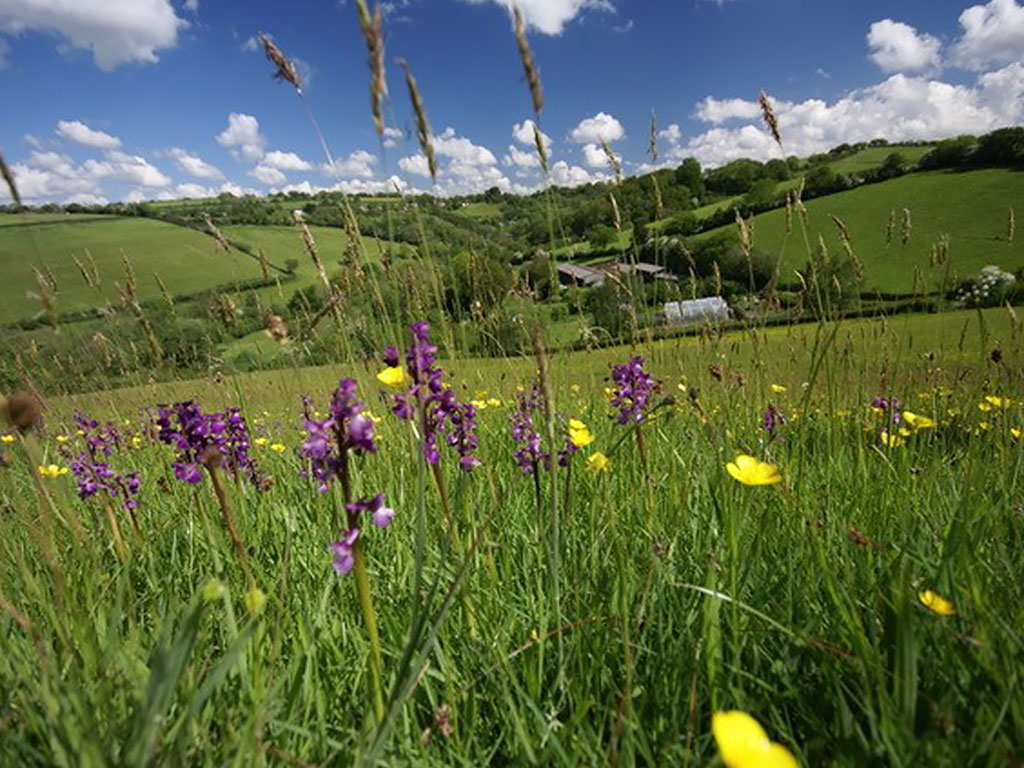What wildlife-rich looks like:
Flower-rich grasslands provide essential pollen, nectar and seeds and can support rare plants. Old grass tussocks and long grass provide essential shelter and food for small mammals, ground-nesting birds and invertebrates. Bare ground in shorter swards provides basking and nesting sites for invertebrates such as bees. Wildlife-rich grasslands are found in mosaics with trees, hedges, patches of scrub, watercourses and ponds. In the summer they’re full of colour and the sounds of birds and buzzing insects.





